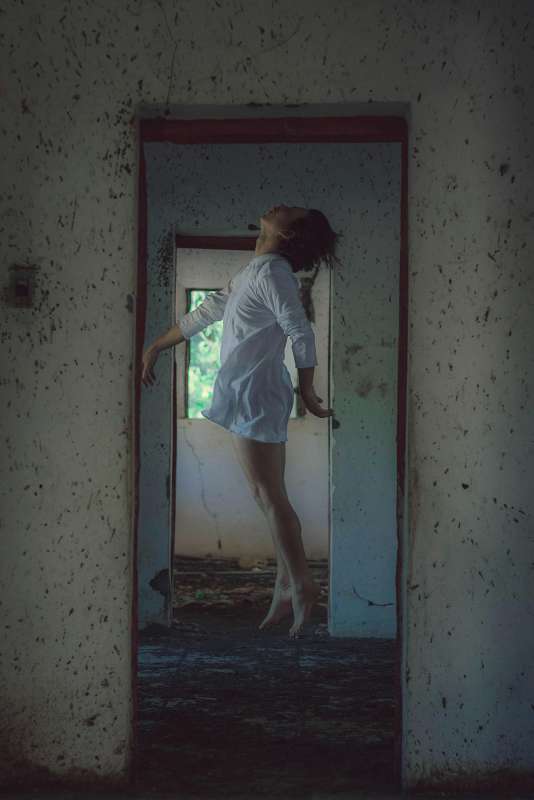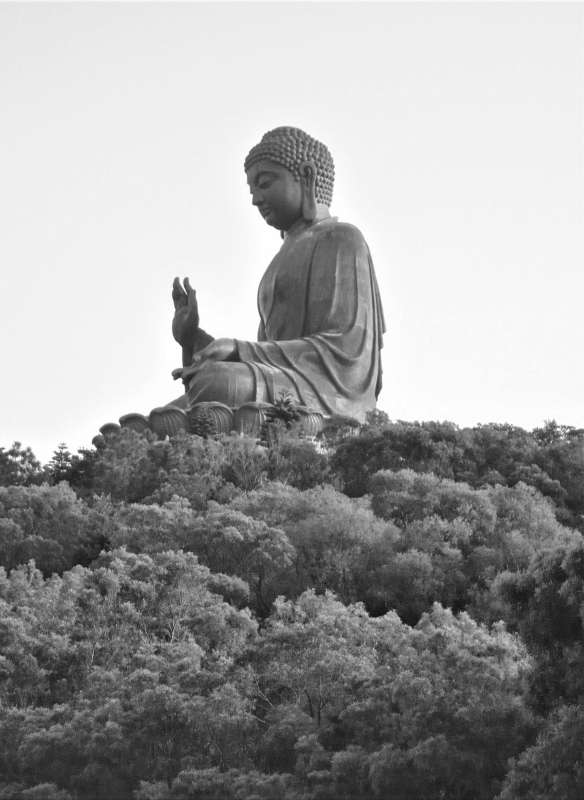K. Johansson’s Unbelievable Discovery: The Forgotten Masterpiece That Changed Everything
Published on: May 2, 2025
The Quiet Life of K. Johansson
K. Johansson’s life had always been painted in soft, muted colors. At twenty-eight, she was a dedicated art teacher in one of Stockholm’s bustling high schools, known for her gentle temperament and her uncanny ability to inspire even the most reluctant students. Her friends often joked that she could coax beauty out of even the most unpromising canvas, and perhaps that was true. But what few knew was that K. Johansson’s passion for art extended far beyond the classroom. In her spare time, she would scour flea markets, estate sales, and old country homes, looking for forgotten treasures that she could lovingly restore. Her apartment was filled with battered frames, chipped vases, and half-finished projects—a testament to her belief that everything, and everyone, deserved a second chance.
Born into a family of farmers in the Swedish countryside, K. Johansson grew up surrounded by the rhythms of nature and the quiet dignity of hard work. Her parents, pragmatic and reserved, had little time for art, but they supported her creative ambitions in their own way. They taught her to see beauty in imperfection and to value the stories hidden in old things. It was this upbringing that shaped her empathy and her almost spiritual connection to the objects she restored. She often said that every scratch and dent told a story, and she felt a responsibility to honor those stories through her work.
The Day That Changed Everything
It was a gray, drizzly Saturday in late October when K. Johansson received a call from a friend who managed a local real estate agency. An elderly woman had passed away, leaving behind a crumbling estate on the outskirts of Stockholm. The house was filled with decades’ worth of belongings, and the agency was looking for someone to assess whether any of the items were valuable. K. Johansson, always eager for a new project, agreed to take a look.
The house was a time capsule, frozen in the mid-20th century. Dust motes danced in the shafts of light that filtered through heavy velvet curtains, and the air was thick with the scent of old paper and mothballs. K. Johansson moved slowly from room to room, her practiced eye noting the details: a porcelain figurine here, a stack of yellowed letters there. It was in the upstairs study, however, that her heart began to race. Behind a battered oak desk, partially obscured by a pile of books, hung a painting that seemed oddly out of place.
The Painting: A Hidden Masterpiece
At first glance, the painting appeared unremarkable—a pastoral scene of rolling hills and grazing sheep, rendered in muted greens and golds. But something about the brushwork caught K. Johansson’s attention. She stepped closer, her breath catching in her throat as she recognized the signature in the lower right corner. It was the unmistakable hand of Lars Nyman, one of Sweden’s most celebrated 19th-century artists. The realization hit her like a thunderbolt. She had seen Nyman’s work in museums, studied his technique in art school, but never imagined she would hold one of his lost paintings in her hands.
Her hands trembled as she carefully lifted the painting from the wall. The frame was chipped and the canvas was covered in a thin layer of grime, but beneath the dirt, the colors still glowed with an inner light. She knew instantly that this was no ordinary find. The painting was rumored to have disappeared during World War II, and art historians had long debated its fate. Some believed it had been destroyed, others thought it had been smuggled out of the country. Now, here it was, in the dusty study of a forgotten house on the edge of Stockholm.
For a moment, K. Johansson stood frozen, overwhelmed by the enormity of her discovery. Tears welled up in her eyes as she thought of the artist, the lost years, and the sheer improbability of the painting’s survival. She felt as though she had been chosen for this moment, as though the universe had conspired to bring her and the painting together. It was a feeling of awe, of gratitude, and of something deeper—an almost mystical sense of connection to the past.
Shock, Joy, and the Weight of History
As the initial shock wore off, K. Johansson’s mind raced with questions. How had the painting ended up here? Who had owned it, and why had it been hidden away for so many years? She searched the study for clues, rifling through drawers and leafing through old letters. Among the papers, she found a faded photograph of a young woman standing in front of the very same painting. On the back, someone had scrawled a date—1943—and a name: Ingrid Lund. A quick search of public records revealed that Ingrid Lund had been the previous owner of the house, and a distant relative of Lars Nyman himself. The pieces of the puzzle were beginning to fall into place.
But with the thrill of discovery came a daunting sense of responsibility. K. Johansson knew that the art world would be electrified by news of the lost Nyman. She also knew that her life was about to change in ways she could barely imagine. She sat down on the floor, cradling the painting in her lap, and wept—tears of joy, of relief, and of fear. For a solitary art teacher from a humble background, the prospect of sudden fame was both exhilarating and terrifying.
Word of the discovery spread quickly. Within days, art historians, journalists, and collectors were clamoring for details. The Swedish press dubbed her “the accidental curator,” and her quiet life was upended by a whirlwind of interviews, phone calls, and offers. Some questioned the authenticity of the painting, while others speculated about its value. Estimates ranged from hundreds of thousands to several million kronor, depending on its condition and provenance.
The Restoration: Breathing Life Into the Past
K. Johansson knew that the painting would need careful restoration before it could be displayed or sold. She reached out to experts at the Nationalmuseum in Stockholm, who agreed to examine the piece. The process was painstaking—layers of dirt and varnish had to be removed with delicate precision, and minor tears in the canvas required expert repair. But as the restoration progressed, the true brilliance of Nyman’s work began to emerge. The colors were richer than she had imagined, the composition more intricate. Hidden details—a flock of birds in the distance, a tiny signature in the corner—came to light for the first time in decades.
Throughout the restoration, K. Johansson was deeply involved, working alongside the conservators and documenting each stage of the process. She felt a profound sense of stewardship, as though she were not just restoring a painting, but resurrecting a piece of history. The experience was transformative. For the first time, she saw herself not just as a teacher or a hobbyist, but as a custodian of culture, entrusted with a legacy that transcended her own life.
The emotional toll was significant. There were moments of doubt, of anxiety, and of sheer exhaustion. But there were also moments of triumph—when a stubborn stain finally yielded to gentle cleaning, or when a hidden brushstroke revealed a new aspect of the artist’s genius. K. Johansson often found herself crying in the quiet of the restoration studio, overwhelmed by the beauty and fragility of what she had uncovered.
The Art World Reacts
When the restoration was finally complete, the painting was unveiled at a special exhibition at the Nationalmuseum. The event drew crowds of art lovers, critics, and dignitaries from across Sweden and beyond. For K. Johansson, it was a surreal experience. She stood in the gallery, surrounded by flashing cameras and murmurs of admiration, and tried to make sense of her new reality.
Experts were unanimous in their praise. The painting was hailed as a major rediscovery, a missing link in Nyman’s oeuvre that shed new light on his artistic evolution. Art historians marveled at the subtle interplay of color and texture, while collectors vied for the chance to acquire the piece. Some speculated that it would fetch a record price at auction, while others argued that it belonged in a public collection.
For K. Johansson, the most meaningful response came from her students. Many of them attended the exhibition, beaming with pride at their teacher’s achievement. Some brought flowers, while others pressed handwritten notes into her hands. “You showed us that anything is possible,” one note read. “You taught us to believe in miracles.”
Newfound Fame and Its Complications
The weeks that followed were a blur of interviews, meetings, and public appearances. K. Johansson was invited to speak at conferences, participate in panel discussions, and even consult on other restoration projects. She was featured in newspapers and magazines, her face splashed across the front pages alongside the newly restored masterpiece. Her quiet life had been upended, and she struggled to adjust to the constant attention.
Not all of the changes were welcome. The sudden influx of fame brought with it a host of challenges. Old acquaintances surfaced, some eager to share in her success, others resentful or envious. She received letters from distant relatives claiming a stake in the painting, and more than one unscrupulous dealer tried to pressure her into selling. The media scrutiny was relentless, and K. Johansson found herself longing for the peace and solitude of her former life.
Through it all, she clung to the values that had guided her since childhood: humility, integrity, and empathy. She refused to be swept up in the frenzy, insisting that the painting’s true value lay not in its price tag, but in its ability to inspire and connect people. She donated a portion of the proceeds from the painting’s eventual sale to arts education programs, determined to give other young artists the same opportunities she had enjoyed.
The Painting’s Mysterious Journey
As news of the discovery spread, art historians delved into the painting’s mysterious past. Archival research revealed a tangled web of intrigue, involving wartime smuggling, family secrets, and lost fortunes. It emerged that Ingrid Lund, the previous owner, had been a distant cousin of Lars Nyman and a passionate art collector in her own right. During World War II, fearing confiscation by occupying forces, she had hidden the painting in a false wall in her study. After the war, the secret was forgotten, and the painting remained hidden for decades, its existence known only to a handful of family members.
The revelation sparked a frenzy of speculation. Had there been other lost works, still hidden in attics and basements across Sweden? Were there more secrets waiting to be uncovered? For K. Johansson, the story was a reminder of the fragility of history—and of the power of ordinary people to change its course.
A Symbol of Hope and Renewal
In the months that followed, the painting became a symbol of hope and renewal for K. Johansson. She continued to teach, but her approach to art—and to life—had been forever altered. She encouraged her students to look beyond the surface, to seek out the hidden stories in the world around them. She spoke openly about her own struggles with loneliness and self-doubt, hoping to inspire others to persevere in the face of adversity.
Her story resonated far beyond the art world. Letters poured in from people who had been touched by her journey—artists, teachers, students, and ordinary citizens who saw in her a reflection of their own hopes and dreams. Some shared their own stories of loss and rediscovery, while others simply offered words of encouragement. K. Johansson responded to as many as she could, grateful for the outpouring of support.
She was approached by filmmakers, publishers, and even a major museum interested in acquiring the painting for its permanent collection. Offers flooded in, some astronomical in their generosity. But K. Johansson remained grounded, determined to honor the legacy of the painting and the lessons it had taught her.
Unexpected Consequences and Lasting Impact
The impact of K. Johansson’s discovery rippled outward in unexpected ways. The renewed interest in Lars Nyman’s work sparked a resurgence of scholarship, with art historians re-examining his lesser-known paintings and uncovering new insights into his life and career. The story also inspired a wave of amateur treasure hunters, eager to uncover their own lost masterpieces. Some criticized the frenzy as opportunistic, while others saw it as a testament to the enduring power of art to captivate the human imagination.
For K. Johansson herself, the journey was both exhilarating and humbling. She struggled at times with the weight of expectation, and with the knowledge that her life would never be the same. But she also found joy in the connections she had forged, and in the knowledge that she had played a small part in preserving a piece of history.
Her students continued to look up to her as a role model, and she became a sought-after mentor for young artists across Sweden. She used her newfound platform to advocate for arts education, arguing that creativity and empathy were essential skills for navigating an increasingly complex world. She spoke at conferences, wrote articles, and even launched a small foundation to support aspiring artists from disadvantaged backgrounds.
The Painting’s Legacy
Today, the painting hangs in a place of honor at the Nationalmuseum, where it draws visitors from around the world. A small plaque beneath it bears the names of both Lars Nyman and K. Johansson—a testament to the unlikely partnership that brought the masterpiece back to life. Schoolchildren crowd around the painting, listening as guides recount the story of its discovery and restoration. For many, it is their first encounter with the power of art to transcend time and circumstance.
K. Johansson visits the museum often, sometimes slipping in unannounced to watch the reactions of visitors. She is moved by the wonder in their eyes, and by the knowledge that her own journey has become a source of inspiration for others. She continues to teach, to restore, and to dream—always searching for the beauty hidden in the cracks and corners of the world.
Her story has become a legend in Swedish art circles, a reminder that miracles can happen when we least expect them. It is a story of loss and redemption, of courage and humility, and of the transformative power of art. Above all, it is a story of hope—a hope that, even in the darkest of places, something beautiful can be found.










